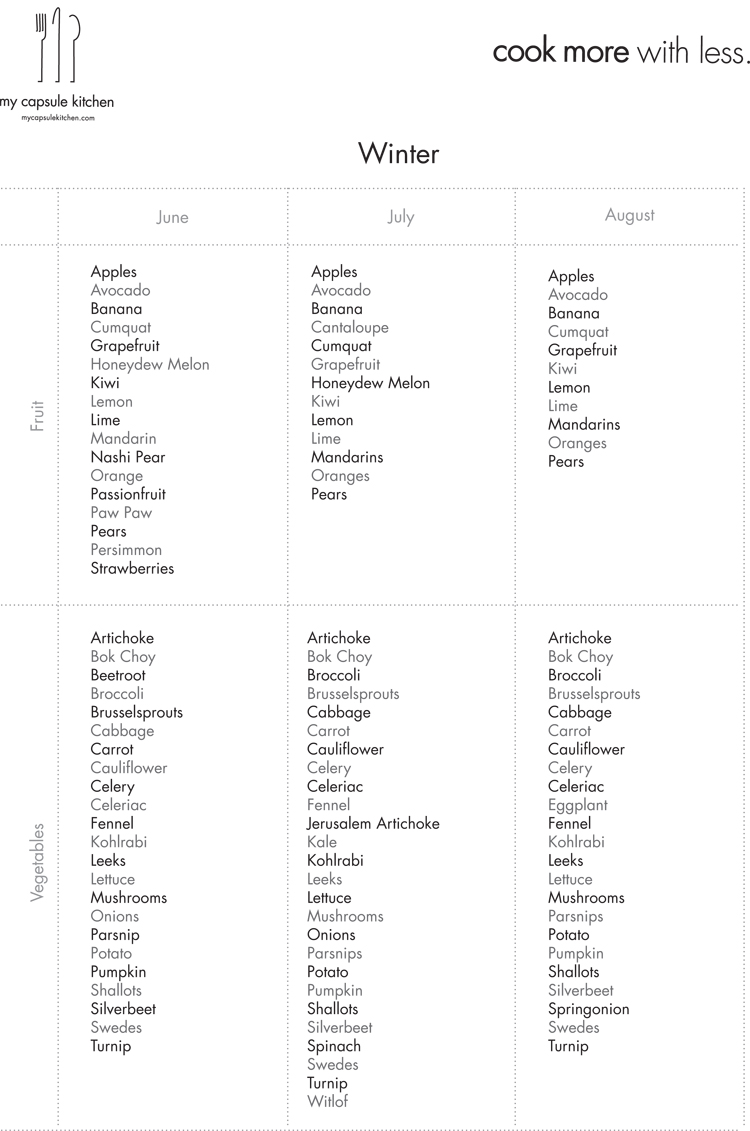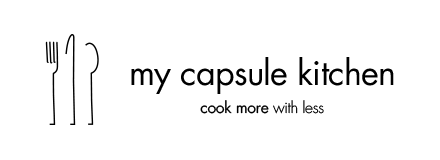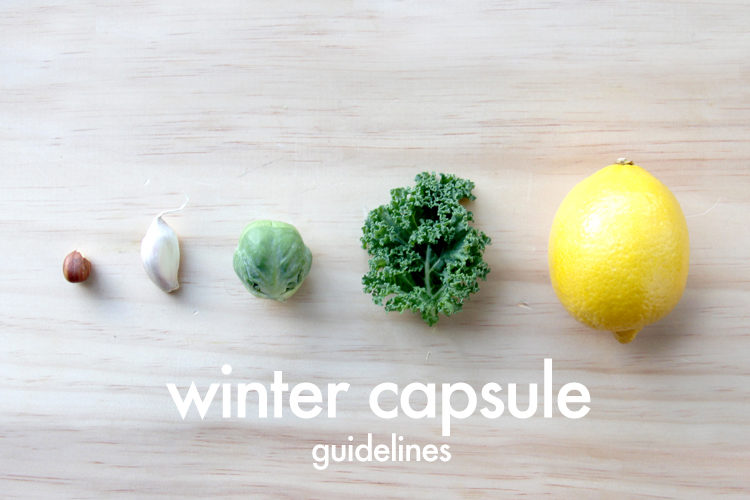I’ve been thinking a lot about how I see a capsule kitchen. Of course letting go of unnecessary clutter in the kitchen that keeps you from cooking is the first step. But once you tackle the overwhelm of too much ‘stuff’ around you, how do you tackle the overwhelm of too many options and no idea what to cook? We have a myriad of choices, inspiration and recipes these days. It can make it hard to cut through the ‘noise’ to find the right things for you. Especially if you want to be healthy.
How to get through winter happy, healthy and with ease
It’s very easy to feel stressed about figuring out what to make for dinner (and lunch, and breakfast…). It’s also easy to resort to simply making the same 5 dishes over and over. So let’s get rid of the overwhelm and set up your winter capsule (recipe) collection!
Exciting, huh. It’s like fashion, just in the kitchen ;).
A seasonal collection of recipes that you love, that nourish you and that you know you enjoy making. A collection that will keep you happy, vibrant and healthy during these darker months of the year.
This collection is all about you! It is not about me telling you how to eat. I will share my recipes and thoughts on food so you can be inspired to find a similar path for yourself, but by no means do you have to make the same meals that I do.
Over the next four weeks I will write about how this will work for me, in the hope that you may find it useful. I have broken it down into four articles. You can sign up for my newsletter and get them each Friday morning along with some delicious recipe suggestions for the week ahead. Or you can check back in here to see where we’re up to.
These are the four topics I will cover, one each week:
- 6 guidelines for your winter capsule
- A blueprint for your winter capsule (recipe) collection
- How to fill out the capsule blueprint with the recipes you already have.
- How to review your personalised recipe collection and amend it to the perfect winter capsule for you and your family.
Let’s go!!
6 guidelines for your winter capsule
Generally the only rule I go by when it comes to eating is Michael Pollan‘s: Eat food, mostly plants, not too much.
When I go a little deeper and think about what has contributed to my health and wellbeing, the following guidelines sum it up:
Eat seasonally
It’s so important and the first step to a healthy lifestyle. You want to eat produce that is at it’s peak and therefore provides an abundance of nutrients. I try to buy as little as possible in the supermarket and go to farmers markets instead.
Eat a large variety of fruit and vegetables
This is the next step to ensure you are getting a maximum amount of different nutrients. Especially dark leafy greens do me a world of good, but in general I feel best if I eat green vegetables in whatever form.
To help you (and myself) with these two guidelines, I’ve made up a table that gives an overview of what is in season over the next three winter months.
See the table below or download your pdf here.

Eat a good amount of raw foods
The concentration of enzymes, vitamins and antioxidants is higher in raw food than in cooked food. It’s fantastic for digestion, lowers inflammation and alkalises the body. We are talking fruit, vegetables, nuts, seeds and sprouted grains. It can be especially challenging in winter when we constantly crave warm comfort food. So something to keep an eye out for.
Eat fermented foods (and drinks)
They help with digestion, reduce inflammation in the body, balance your gut bacteria and therefore influence your overall wellbeing to a great extend. Our gut health is the key to our immune system! If you take probiotics you might want to try and add more fermented foods in your diet. It’s essentially the same, nowhere near as expensive and far more natural than a pill or powder.
Eat mostly plant based
We should focus our meals around the vegetables first and around meat and carbohydrates second. I increasingly swap meat based meals for vegetarian or vegan options or choose meals that only have a small meat component. There are important proteins, vitamins, minerals and essential amino acids in meat that I don’t want to go without, but I prefer to reduce the amount of meat and buy high quality (organic, free range, etc.) instead.
Eat what is cooked (and baked) from scratch
Only then are we truly in charge of what we are putting in our bodies. Healthy eating lies in preparing food from scratch, that is the inconvenient truth.
These are my 6 guidelines and I hope to built my first winter capsule (recipe) collection with it over the next four weeks. Exciting times!
You can download the seasonal overview for winter here.
Are there any winter vegetables you haven’t cooked with or do you love them all? Let me know! I’d love to hear from you.
I hope you’re keeping warm and I wish you a wonderful start to winter. Be kind to yourself!
Katrine x

